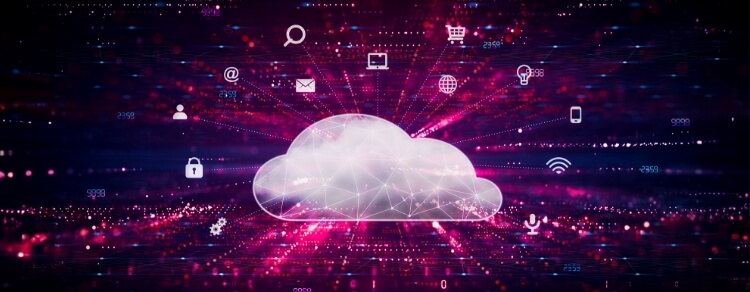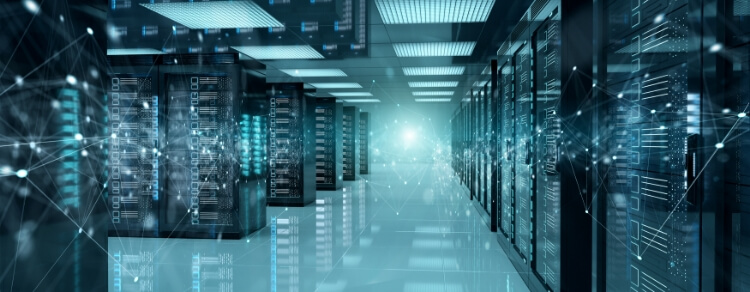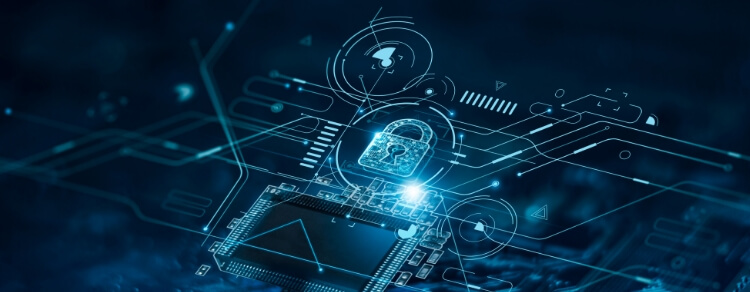How to plan effectively for B2B tech marketing events
May 10, 2024
By MarketReach Perspectives
March 29, 2024

Keeping up with the latest vocabulary can overwhelm even leaders in B2B technology. Acronyms and other jargon dominate the conversations around emerging innovations.
Maybe you’re encountering some for the first time. Maybe you don’t want your colleagues to find out what you don’t know.
It’s OK. We understand. We want to help. Technology should empower and connect, not confound.
In that spirit, we offer this reference to B2B technology terms.
A | B | C | D | E | F | G | H | I | J | K | L | M | N | O | P | Q | R | S | T | U | V | W | X | Y | Z

Anything as a service (XaaS) is a broad term that refers to the trend of delivering technologies remotely over a network, on demand. It includes software, infrastructure, platforms, devices, and processes. With XaaS, you can use these capabilities without the need to install, maintain, or manage the underlying infrastructure. It's like having access to these services whenever you need them, without the hassle of dealing with the technical details. (See also infrastructure as a service, platform as a service, and software as a service.)
An application programming interface (API) is a set of protocols and tools for building software. APIs allow applications to talk to each other by making access to services and data easier.
Artificial intelligence (AI) refers to computer systems that can do tasks needing human-like intelligence. These tasks include things like understanding images, recognizing speech, and making decisions. AI systems can learn from data and improve their performance without needing explicit programming for each specific task. We used help from AI to make this list comprehensive yet accessible.
Artificial intelligence for IT operations (AIOps) uses artificial intelligence like machine learning to help IT teams manage their infrastructure and troubleshoot problems. It analyzes data from different systems to spot issues, connect related events, and provide insights. This helps automate operations and make teams more effective. (See also DevOps and ITOps.)
Artificial neural networks are a machine learning technique inspired by the human brain. They contain interconnected nodes that function similarly to neurons, passing signals between layers to identify patterns in data. Neural networks "learn" by analyzing large amounts of data, allowing them to perform complex tasks like image and speech recognition.
Augmented reality (AR) enhances the real world by overlaying digital content. Through a camera, it adds interactive layers of graphics, sounds, and location data to your view of the physical environment in real time. This blends digital and physical worlds together. (See also virtual reality.)
Bare-metal computing runs software directly on hardware without an operating system or virtualization layer in between. This can sometimes provide better performance than virtual machines.
A bill of materials (BOM) shows all the individual parts and components needed to make a finished product, along with how many of each are required. It helps with planning production and managing inventory levels.
A bot (short for robot) is a software application that runs automated tasks over the internet, usually through an application programming interface. Types of bots include chatbots and virtual assistants that can carry on conversations. Bots are commonly used for customer service, marketing, and simple automated workflows.
Bring your own device (BYOD) is a policy that lets employees use their personal devices like phones and laptops for work. While convenient, it also introduces security and management challenges for IT to address since the devices aren't fully controlled. (Compare to shadow IT.)

Capital expenditures (capex) refers to money spent to buy or upgrade long-term assets like buildings, equipment, and technology that will be used for several years. This improves the value of assets over time, in contrast to using operating expenses for day-to-day services.
Cloud computing refers to storing and accessing data and programs over the internet instead of a local device or server. With cloud services, users and companies can access applications and files from any internet-connected device. This provides flexibility and scalability compared to traditional on-premises systems. Virtualization is a key technology that enables cloud computing.
Cloud-native software is designed specifically to run well in cloud environments, allowing easy up and down scalability. This provides more flexibility than software optimized for only on-premises hardware.
Colocation (colo) facilities are data centers that businesses can rent space in for their servers and IT equipment instead of building their own centers. The facilities provide the building, cooling, power, and security so customers just focus on their infrastructure.
Communications service providers (CSPs) are companies that offer information transfer services over networks. These include internet, telecommunication (phone), cable TV, and satellite providers.
Composable infrastructure is similar to converged infrastructure, but more flexible and software-defined. It allows on-demand provisioning of compute, storage, and networking resources instead of fixed configurations.
The compound annual growth rate (CAGR) is a projection of expected growth of demand over multiple future years. CAGR helps forecast trends in the technology industry.
Containers bundle application code and dependencies to ensure reliable deployment across diverse computing environments. Containers aid portability between on-premises and cloud environments.
Converged infrastructure (CI) combines servers, storage, networking, and management into single integrated hardware systems. This reduces complexity compared to managing separate components. (Compare to hyperconverged infrastructure.)
Customer relationship management (CRM) software helps companies manage relationships with customers to improve business and satisfaction. It tracks interactions to give a full view of customers.

Data analytics is the process of examining data to find patterns and insights to inform business strategy and decision making.
The data center is the foundation of modern computing. These centrally located computer systems and associated components provide the infrastructure needed for today's data-intensive workloads and applications. The goal is to provide hassle-free, secure operation of business-critical IT systems and data. Activities may include colocation or full outsourcing of infrastructure management. The goal is to give users flexibility while ensuring responsiveness, compliance, and non-stop availability.
A data fabric is an integrated storage setup that makes data easy to access, manage, and move between different environments. Its design simplifies data usage across systems.
A data lake is a centralized repository that allows you to store all your structured and unstructured data in its native format until it's needed. It provides a flexible way to incorporate diverse types and sources of data for future analytics use cases that may not be known yet.
Deep learning is a type of machine learning using artificial neural networks with multiple levels that build upon each other. Each layer interprets the output of the previous one, allowing for very sophisticated pattern recognition like the human brain, and enabling tasks such as image and speech recognition.
A data warehouse aggregates data from multiple sources (such as CRM and ERP software) into a centralized repository optimized for analysis over time. It provides a big-picture view of trends and patterns to inform strategic decisions.
DevOps aims to improve both the speed of software releases and the reliability of operations through collaboration between Development and Operations teams. Bringing these functions together streamlines processes. (See also AIOps and ITOps.)
Edge computing processes data where it's generated for Internet of Things (IoT) systems, rather than sending it all to centralized data centers. This allows analyzing real-time information where devices are located, like at factories or in vehicles, enabling applications that need fast responses. Handling data at the edge reduces network traffic, which improves efficiency and responsiveness.
Enterprise resource planning (ERP) software helps organizations manage business operations and automate back-office work through integrated applications. It allows coordinating functions like procurement, inventory, sales, and accounting on a single system.
An exabyte (EB) is an enormous unit of digital information—1,000 petabytes or one quintillion bytes. Government or scientific projects dealing with huge volumes of sensor, image, or measurement data may require storage at the exabyte scale.
Extract, transform, load (ETL) is the process of taking data from one source, preparing it properly, and loading it into another destination like a database or data warehouse for analysis. This readies information for deeper insights.
Fifth generation (5G) cellular technology is a global wireless standard that enables a variety of advancements over its preceding generations. These include increased speed, reduced latency, and improved flexibility of wireless services. 5G provides peak speeds of up to 20 Gbps, significantly higher than 4G’s maximum of 1 Gbps. 5G’s lower latency can improve the performance of business applications and other digital experiences, such as video conferencing and self-driving cars.
The General Data Protection Regulation (GDPR) sets rules for protecting personal privacy within the European Union (EU). It aims to give individuals more control over how companies use their personal data.
Generative AI (GenAI) focuses on creating original content based on patterns learned from data, going beyond replication to a form of creativity. While intellectual property and accuracy issues exist, generative AI's ability to learn from and apply diverse information in innovative ways will redefine many aspects of life.
A graphics processing unit (GPU) is a specialized electronic circuit designed to rapidly manipulate and alter memory to accelerate the creation of images. GPUs are very effective at manipulating computer graphics and image processing and are often used for machine learning tasks involving 3D graphics like gaming and augmented reality. GPUs work together with CPUs but excel at parallel processing of large blocks of data.
A greenfield project builds new IT systems without constraints from old infrastructure, similar to developing unused land. This allows full creative freedom in the design.

High availability refers to IT architectures and designs that minimize downtime and data loss. The goal is to maintain uptime, accessibility and performance at a very high level, typically measured in "nines."
High-performance computing (HPC) combines processing power from multiple computers to work together solving extremely complex problems faster than a single machine could. It's used in science, engineering, and other data-intensive fields.
Hybrid cloud blends private cloud security with public cloud scalability. Workloads can move between the two environments flexibly based on computing needs over time.
Hyperconverged infrastructure (HCI) refers to converged systems with the compute, storage, and networking all virtualized. This simplifies scaling.
Information technology (IT) involves computers, networks, software, systems, and technologies for storing, accessing, and analyzing data. IT underpins modern business and enables new capabilities. (See also OT.)
Infrastructure as a service (IaaS) provides basic cloud computing building blocks like servers, storage, and networking resources over the internet on an as-needed basis. Customers don't have to own the physical equipment. (See also anything as a service, platform as a service, and software as a service.)
The installed base (IB) refers to the total number of devices or software licenses already deployed with customers for a vendor or technology.
The Internet of Things (IoT) connects physical objects to the internet with sensors and software, enabling remote monitoring, coordination, and analytics. This creates "smart" devices that exchange data over networks.
IT operations (ITOps) teams manage, monitor, and support enterprise IT infrastructure to optimize availability, performance, incident response, and service levels. They provision systems, do monitoring, service management, engineering, and troubleshooting. (See also AIOps and DevOps.)

Jargon is specialized industry terminology. It allows efficient communication between insiders but can confuse outsiders. Always clearly define any terms that may be unfamiliar to your audience.
Key performance indicators (KPIs) are measurable metrics that show progress on business goals and targets, enabling data-driven evaluation of initiatives.
Kubernetes (K8s) is an open-source platform for automating deployment and management of containerized applications across infrastructure for flexibility.
A large language model (LLM) is an advanced AI system trained on massive data sets using deep learning. LLM systems are designed to be helpful, harmless, and honest in conversations.
Line of business (LOB) refers to a company's core revenue-generating products, services, or capabilities.
Long-term evolution (LTE) is a high-speed 4G wireless standard, representing an evolution laying the groundwork for 5G networks.
Machine learning (ML) is an application of artificial intelligence. It uses algorithms that learn from data patterns to make automated predictions and decisions, without being explicitly programmed where to search. This discovers insights within data sets.
Natural language processing (NLP) technologies allow computers to understand, interpret, and generate human language through analyzing vast amounts of text. This area of AI continues advancing to process language more accurately. NLP powers capabilities like summarization, translation, and question answering, enabling more human-like interactions.
Network function virtualization (NFV) means transitioning dedicated network appliances like routers and firewalls to software running on standard servers. This provides more flexibility and lower costs than specialized hardware. (Compare to virtualized network functions.)
"Nines" is a metric of high availability representing the percentage of uptime expected of a system over the course of a year. Each additional 9 promises a 10X reduction of downtime. For example, "six-nines" (99.9999%) has 31.6 seconds of expected annual downtime, which "seven-nines" (99.99999%) decreases to 3.16 seconds. We've even seen claims of "fourteen-nines" (99.999999999999%), equating to downtime measured in nanoseconds per year.

Online analytical processing (OLAP) enables analyzing data from multiple angles within a multidimensional database. Users can "slice" information across dimensions like time, product, and region to gain insights.
Online transaction processing (OLTP) processes high volumes of real-time transactions like orders and payments. It requires fully committing or rolling back data to maintain integrity. Reliable OLTP underpins critical business operations.
On-premises refers to privately owned data centers, servers and infrastructure maintained on an organization's property rather than off-site in colocation facilities or the public cloud. This grants control, speed, and latency benefits compared to cloud. However, on-premises is seeing hybrid strategies emerge. The phrase "on-premise" is incorrect: A premise is an idea; a premises is a location.
Operating expenses (opex) refers to ongoing service, license, and system costs often paid periodically. This provides budget flexibility compared to capex, which is focused on acquiring long-term assets.
Operational technology (OT) involves hardware and software for monitoring and controlling physical devices and industrial processes. OT is adopting information technology standards for connectivity, analytics, and automation to optimize operations.
A petabyte (PB) is equivalent to 1,000 terabytes or one quadrillion bytes. Large data sets from enterprises, social media, and search now require petabyte storage for customer, sales, and operations data.
Platform as a service (PaaS) delivers tools for building and deploying applications in the cloud without infrastructure management. This allows faster development compared to on-premises options. (See also anything as a service, infrastructure as a service, and software as a service.)
Private cloud offers security and scalability benefits while maintaining dedicated access for a single organization. It offer comparable security to on-premises infrastructure and increased scalability without the cost and maintenance of hardware.
A proof of concept (PoC) validates new concepts, methods, or processes through prototyping, rather than final products. It proves real-world feasibility.
Public cloud provides scalability and pay-per-use flexibility from third-party providers but may not suit all security needs like private cloud or on-premises IT.
Quantum computing leverages the principles of quantum mechanics using quantum bits (qubits) that can represent 0 and 1 simultaneously due to a property called superposition. This enables processing vast amounts of data in parallel. Maintaining coherent qubits remains challenging.

Remote office/branch office (ROBO) setups connect satellite offices externally to a core network, requiring secure remote access and resource sharing.
A request for proposal (RFP) details project requirements to solicit vendor proposals, aiding qualified provider selection to meet needs.
Retrieval-augmented generation (RAG) is an AI technique that combines the power of large language models with the ability to access external information in real-time. It's like giving generative AI an instantly searchable library to reference before answering questions or generating content. This allows it to provide more contextually relevant responses by blending its trained knowledge with freshly retrieved information.
Return on investment (ROI) assesses profit or cost savings from investments relative to costs, guiding allocation among opportunities.
Robotic process automation (RPA) uses automated software bots for repetitive tasks, aiming to reduce costs and errors compared to employee workloads.
Scalability ensures flexibility to handle increasing demands, prepping systems and processes for future growth.
A service-level agreement (SLA) defines minimum service levels like uptime percentages or response times between providers and customers.
Shadow IT refers to unauthorized or unofficial systems outside the IT department's control. When employees take IT matters into their own hands rather than going through official channels, it can introduce security risks. (Compare to bring your own device.)
Small and midsize businesses (SMBs) are companies classified by number of employees, typically under 100 for small organizations and under 1,000 employees for midsize organizations. Company scale impacts available IT resources.
Software as a service (SaaS) delivers hosted applications through the cloud without local installation, offering payment flexibility and automatic scaling based on usage. (See also anything as a service, infrastructure as a service, and platform as a service.)
A software-defined data center (SDDC) abstracts data centers through centralized software control for automation and flexibility.
Software-defined storage (SDS) decouples storage capacity from hardware through software management across vendors and data requests.
Special performance incentive funds (SPIFs/SPIFFs) motivate salespeople through short-term bonuses to promote targeted products and services during campaigns.
A statement of work (SOW) details deliverables, timelines, milestones, and requirements for procurement of specific IT projects or services.
Tailored data center integration (TDI) leverages existing infrastructure when deploying new software, blending legacy and current systems for easier integration.
A terabyte (TB) equals 1 trillion bytes or 1,000 gigabytes. A single terabyte can store approximately 88 hours of movies in 4K format.
Total cost of ownership (TCO) analysis sums direct/indirect costs of a product/system over its lifetime from acquisition to disposal, guiding investment decisions among alternatives with different long-term cost structures.
Upsurge forecasting refers to predictive analytics techniques leveraging AI algorithms specifically customized to model and anticipate sudden, spike-type growth patterns in technology consumption or demand. Unforeseen exponential skyrockets for capacities like cloud compute unexpectedly overload budgets mid-year. Adopting upsurge forecasting injects forward-looking dynamism into capacity planning to balance pragmatic uncertainty thresholds in an increasingly turbulent marketplace.
 V
VVirtual desktop infrastructure (VDI) hosts desktop interfaces centrally for remote access, facilitating management through centralized storage of user preferences, data, and applications rather than locally.
A virtual machine (VM) is a software-based emulation of a physical computer system that runs a complete operating system. Multiple VMs can exist on the same physical server, reducing hardware costs. Because each VM appears to have its own virtualized processor, memory, and storage, workloads can be easily migrated between physical servers or relocated in the event of hardware failure without interruption. Virtual machines form the basic building blocks of modern cloud computing infrastructure and software-defined data centers.
Virtual reality (VR) immerses users in simulated 3D environments through interactive displays and tracking, allowing virtual world exploration. (See also augmented reality.)
Virtualized network functions (VNFs) transition standalone network functions from hardware to software for automation and agility benefits. (Compare to network function virtualization.)
“What’s in it for me?” (WIIFM) reflects customers' underlying question about the tangible value or benefits of any new innovation, not just its new specifications.
XaaS (See Anything as a service.)
A yottabyte (YB) is equivalent to 1,000 zettabytes but is currently theoretical because nothing is large enough to be measured in that form. For instance, at publication, all the data on the internet is estimated to encompass just over 1/10 of a yottabyte. However, given the exponential speed of data creation, it will be a matter of mere years before it is needed.
 Z
ZZero-trust security continuously verifies every entity without inherent trust, hindering breaches through network credentials compromise and enabling consistent remote access.
A zettabyte (ZB) is equivalent to 1,000 exabytes or one sextillion bytes. Though not used in most environments, projecting to zettabyte capacity underscores the booming generation of information across industries. Data volumes are expected to multiply by 10X in a few years. Some analysts estimate the global datasphere to exceed 200 ZB by 2025.
A | B | C | D | E | F | G | H | I | J | K | L | M | N | O | P | Q | R | S | T | U | V | W | X | Y | Z
We take pride in a team loaded with smarts, wit, and ideas. If you'd like to have a smarter, wittier inbox filled with ideas each month, subscribe here to the MarketReach Blog, and we will let you know when there is something new you might like!

Need us now? Just want to learn more? We’d love to talk.